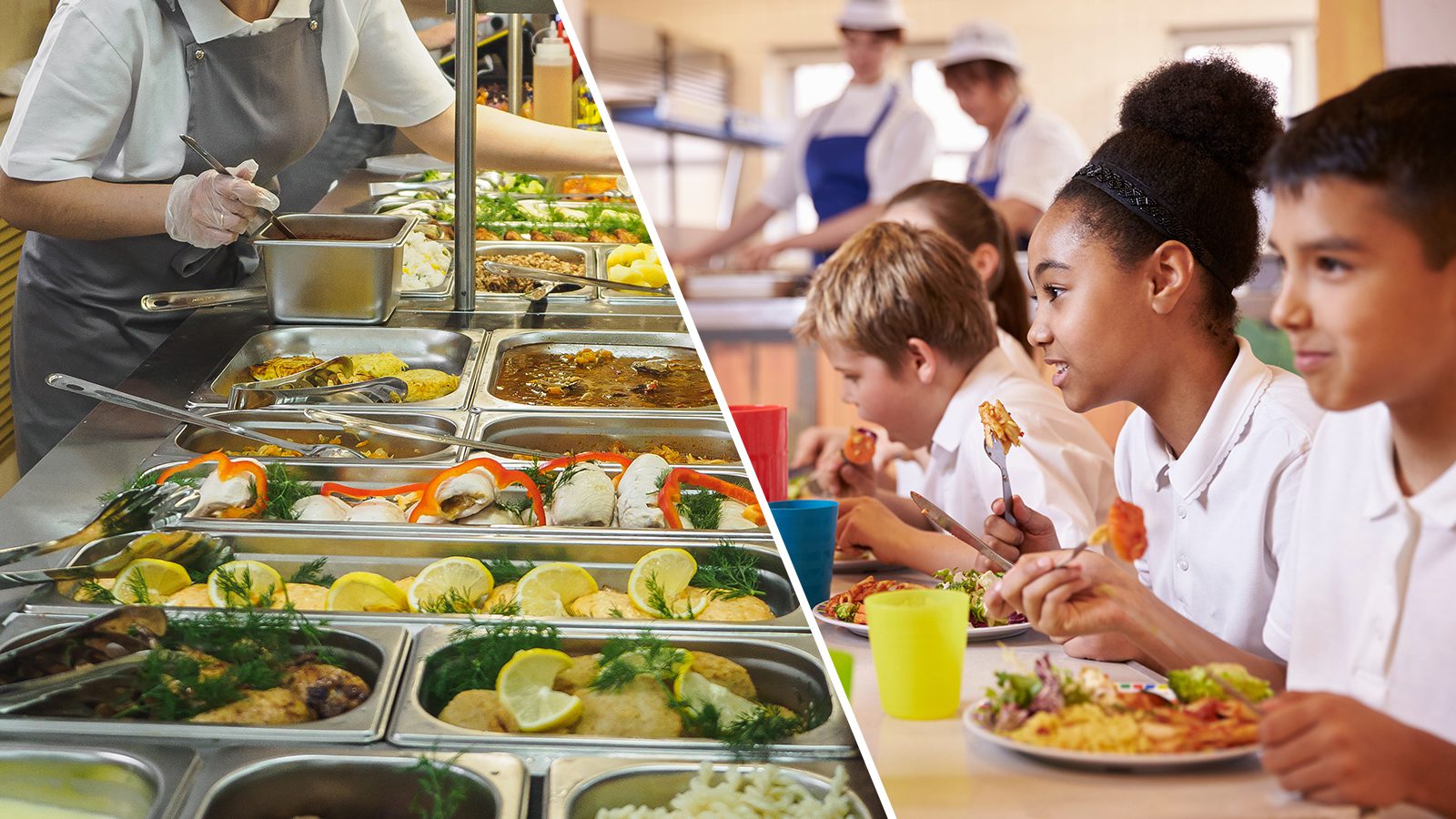California became the first state to implement the Universal Meals Program this school year, offering free meals to all school children. The state launched a universal meal plan in 2021, funded mainly by the federal government.
In 2022, state law mandated that public schools (including charter schools) provide all school children with two nutritious meals daily. State taxpayers fund the program this time around.
The Universal Meals Program builds on the foundations of the federal National School Lunch Program (NSLP) and School Breakfast Program (SBP). The plan includes three essential features designed to ensure its’ success.
First, state officials expanded the program to include a nutritious breakfast and lunch for all school children daily. Second, the state expects high-poverty schools to adopt a federal universal meal service provision. Third, the California State Legislature provided additional state meal reimbursement to fund the Universal Meals Program.
California started the lunch program during the pandemic to ease the financial strain on families. However, with the economy still recovering, one out of five school children don’t know where their next food will come from. So school districts in California wanted to do their part to ensure no student experiences hunger.
Under California’s Universal Meals Program, all school children in grades K-12 qualify for complimentary breakfast and lunch. The Los Angeles Unified School District will offer an additional free meal to students each day. Rising food prices and inflation have left kids in L.A. especially vulnerable to food insecurity.
Over 81% of students in the school district come from families who meet the income requirements for the federal school meal program. Estimates reveal that 60% of public school students throughout the state qualify for the free meal plan.
California Provides All School Children With Free Meals
Before the pandemic, L.A. Unified families with incomes between $27,560 and $39,220 had to apply for the National School Lunch Program. To qualify for meal assistance, they had to complete an application at least 30 days before the next school year began.
However, district officials asserted that the qualification process didn’t consider the city’s high cost of living. Therefore, it kept many families from getting the necessary help. Since the pandemic caused widespread financial hardship, many school districts began offering children free meals regardless of their parent’s income.
Even though school campuses closed throughout 2020, many districts worked hard to keep providing school children free meals. The Families First Coronavirus Response Act permitted the USDA to issue waivers to school districts. The legislation allowed schools to continue offering free meals to students, even off-campus.
L.A. Unified went above and beyond to ensure students received two free meals daily. In March 2020, the district collaborated with the Red Cross to prepare 60 sites where needy families could pick up meals. When the next school year began, California allocated extra funds so that all school children, regardless of socioeconomic status, could have free meals.
Since the state launched the Universal Meals Program, parents won’t have to worry about budgeting their children’s meals. They can feel assured knowing that all school children will have at least two nutritious meals at no cost.
School districts will automatically enroll students in the program, but students’ participation is optional. Cafeteria workers will serve any students who ask for the program.
School breakfast and lunch must meet specific nutritional requirements. For instance, current nutrition guidelines recommend consuming no more than 30% of daily calories from fat and less than 10% from saturated fat. Regulations also mandate that lunches provide one-third of the dietary intake of protein, Vitamin A, Vitamin C, iron, calcium, and calories.
While ensuring access to nutritious meals is crucial, education remains equally important in fostering a well-rounded development for children. Prep schools emphasize a holistic approach to education, blending academic excellence with social and emotional learning. They recognize that a child’s growth extends beyond the classroom, integrating life skills, critical thinking, and creativity into their curriculum.
Programs like the Ohio 22+ program aim to provide additional support to older students, ensuring they have the necessary resources to thrive academically and personally, paving the way for future success. Moreover, prep schools often offer extracurricular activities that enrich students’ experiences, from sports to arts and community service. These opportunities allow students to explore their interests, develop teamwork skills, and build confidence outside of academic settings.
By creating an environment where both education and nourishment are prioritized, prep schools help children not only excel in their studies but also grow into well-rounded individuals prepared for the challenges ahead. Balancing academics and essential life skills sets the foundation for lifelong learning and success.
California School Districts Don’t Skimp On Taste
While meals must meet federal nutrition requirements, individual school districts can decide what foods to serve and how to prepare them. Café LA, L.A. Unified’s food services division, said it surpasses USDA requirements for balanced, healthy nutrition.
The district explained that all foods are low in sodium and have no trans fats, nitrates, or sulfites. They also come with a serving of fresh vegetables and fruit, which ensure school children receive essential nutrients.
Students seem to enjoy the healthier offerings, including mango smoothies, ramen, berries, and a turkey, ham, and cheese croissant.
Other California school districts have also started providing students with more nutritious options. Merced Union High School District (MUHSD) became one of the first districts statewide to implement the Universal Meals Program. According to MUHSD’s Director of Nutritional Services, Erin Tassey, the school district believes all school children deserve access to healthy food.
In an interview, Tassey told ABC 7 News, “When a student would come through a lunch line, and they were considered to be a free student, it would create definitely a barrier with getting meals during the day.” Now, students can enjoy two nutrient-dense breakfasts and lunches daily without worrying about how to pay for the food.
Yohan Zuzlewski, a student at the district, used to pay for his school lunches. Since the Universal Meals Program was established, he feels thankful for the opportunity. “I remember when I was in elementary school, I had to pay for lunch and I really did not like that,” he told ABC 7 News. “It is nice to know that this benefits everyone overall.”
During the first week of school in 2022, he enjoyed a hearty, delicious slice of pizza baked with whole-grain bread. Luckily, students don’t have to sacrifice taste with healthier dining options.
Final Thoughts on California Offering All Students Free Meals
California became the first state nationwide to offer all school children complimentary breakfast and lunch. They will receive free meals regardless of their parent’s income or ability to pay. The program is a massive relief for middle-class families who previously didn’t qualify. Many families have struggled to keep up with rising food prices and inflation, putting children at risk of food insecurity. Thankfully, the Universal Meals Program in California ensures children can focus on learning instead of where their next meal will come from.




















